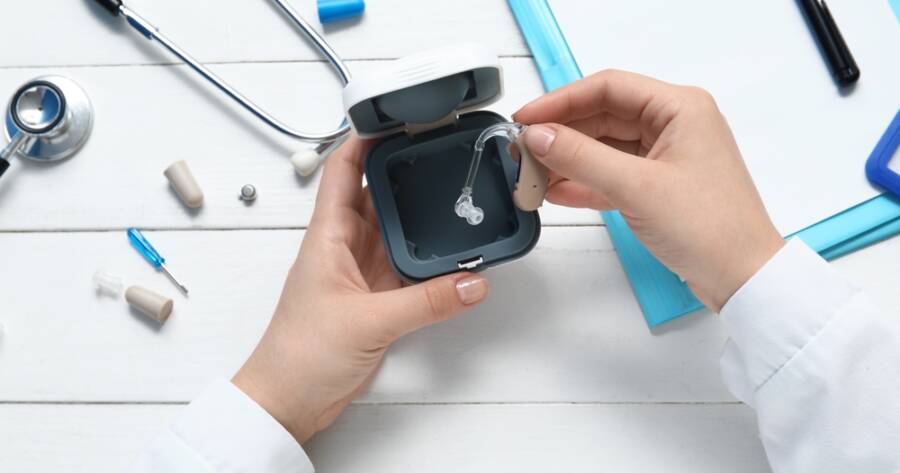Hearing aids have come a long way in recent years, evolving from basic amplification devices to sophisticated pieces of technology capable of delivering highly personalized auditory experiences. As we approach 2025, the world of hearing aids is undergoing a revolution, driven by advancements in sound technology that are improving not just the quality of hearing, but also the lifestyle and independence of users. Explore the key advancements in hearing aid technology, including artificial intelligence, connectivity, and comfort, and what we can expect for the future of hearing aids.
Artificial Intelligence and Machine Learning
Contemporary hearing aids leverage artificial intelligence (AI) and machine learning algorithms to adapt dynamically to various listening environments. These intelligent systems analyze ambient sounds in real-time, distinguishing between speech and background noise, and automatically adjust settings to optimize clarity. For instance, devices like the Starkey Livio AI incorporate sensors and AI to monitor physical activity and cognitive health, offering users a holistic health tracking experience alongside superior sound quality.
Enhanced Connectivity and Integration
The integration of Bluetooth technology has revolutionized the way hearing aids interact with other devices. Users can now stream audio directly from smartphones, televisions, and other gadgets, ensuring a seamless auditory experience. The introduction of Auracast with Bluetooth LE in platforms like Android 16 enables hearing aids to connect directly to public audio systems, such as those in airports or theaters, allowing users to receive broadcasts directly through their devices.
Discreet and Ergonomic Designs
Advancements in miniaturization have led to the development of hearing aids that are both powerful and discreet. Invisible-in-Canal (IIC) models fit entirely within the ear canal, making them virtually undetectable while providing high-quality sound amplification. These ergonomic designs ensure comfort during extended use and cater to users seeking both functionality and aesthetics.
Rechargeable Batteries and Sustainability
The shift towards rechargeable batteries has addressed both convenience and environmental concerns. Modern hearing aids equipped with lithium-ion batteries offer extended usage on a single charge, eliminating the need for frequent battery replacements. This advancement not only reduces the environmental footprint but also enhances user convenience, as devices like the Starkey Edge AI RIC RT provide up to 51 hours of continuous use per charge.
Personalized User Experience
The incorporation of user-centric features has become a hallmark of modern hearing aids. Through companion apps, users can customize settings, adjust sound profiles, and receive real-time feedback. For example, Apple’s AirPods Pro, with recent regulatory approvals, now offer clinical-grade hearing aid functionalities, allowing users to conduct hearing tests and tailor audio output to their specific hearing profiles directly through their iPhones.
Integration with Health Monitoring Systems
Beyond auditory assistance, hearing aids have evolved into comprehensive health monitoring devices. Features such as fall detection, heart rate monitoring, and physical activity tracking are now integrated into devices like the Starkey Livio AI, providing users and healthcare providers with valuable health data. This convergence of technologies underscores the role of hearing aids in promoting overall well-being.
Future Outlook
As technology continues to advance, the future of hearing aids looks promising. Emerging developments in neural amplification and noise-adaptive speech enhancement are on the horizon, aiming to further improve sound quality and user comfort. Research into deep neural networks, such as the NeuroAMP project, is paving the way for personalized amplification tailored to individual hearing profiles, promising a more natural listening experience.
In conclusion, the landscape of hearing aids in 2025 reflects a revolution in sound technology, characterized by intelligent features, seamless connectivity, and personalized care. These advancements not only enhance auditory perception but also integrate holistic health monitoring, redefining the role of hearing aids in users’ lives. As research and innovation continue to drive the industry forward, individuals with hearing impairments can look forward to increasingly sophisticated solutions that cater to their diverse needs.





